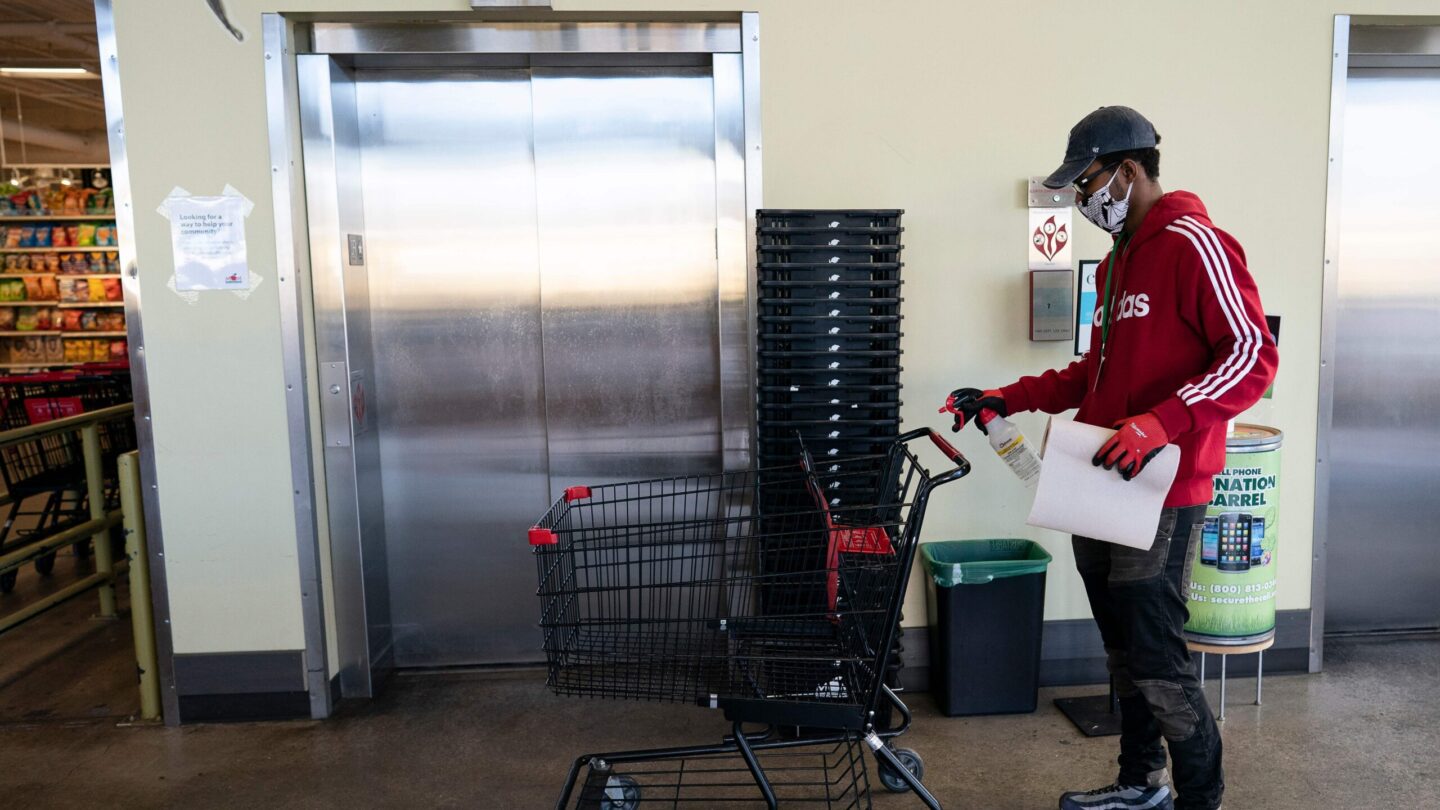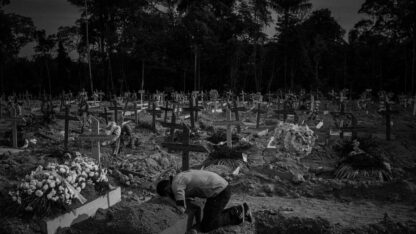Omicron has left employers around the country short of workers. Sometimes very short.
At United Airlines, CEO Scott Kirby said nearly a third of the workforce called out sick on one day alone at Newark Liberty International Airport.
At MOM’s Organic Market, some of its east coast stores have had to deal with 15 out of 50 workers out on a single day.
And at the community health center Mary’s Center in Washington, D.C., half of the Covid Response Team tested positive for the virus over the past few weeks.
And yet, doors remain open. The show must go on.
Stores are closing early, opening later
With new COVID cases soaring above 800,000 a day, workers are calling out sick in droves. And employers around the country are scrambling to adapt — often on the fly.
The department store Macy’s decided to shorten store hours for January, opening all locations an hour late and closing an hour early. The Smithsonian’s National Zoo in Washington, D.C. is temporarily moving to a Thursday through Sunday schedule. Before the pandemic, it was open every day except Christmas. Advocate Aurora Health of Wisconsin has temporarily closed three urgent care centers and moved staff to busier locations.
Your broccoli might not be as clean as usual
MOM’s Organic Market isn’t cutting hours. But with so many workers out sick, things have been a bit different. Groceries aren’t being bagged for every customer. Shopping carts may be left scattered in the parking lot. The broccoli may not be as clean as usual, in part because someone who doesn’t normally work in produce is filling in.
“The end goal that we’ve had so far is as minimal disruption for our customers as possible, knowing that sometimes we’re going to have to not be as attentive to details,” says Jon Croft, chief culture officer at MOM’s. The Maryland-based grocer has 21 locations.
As a thank you to workers who have been putting in their hours and then some, MOM’s introduced a $2 per hour bonus for all employees who complete their scheduled shifts within any pay period.
Testing and vaccine demand explodes just as employees fall ill
At Mary’s Center, which serves communities in Washington, D.C., and Maryland, there’s also been a lot of pinch hitting among employees. Demand for testing and vaccines exploded over the holidays, just as scores of the health center’s employees were falling ill, including medical staff.
In order to continue providing COVID-related and other services, they moved staff around to different locations, depending on where the most absences were that day. People started taking on tasks that were beyond the scope of their normal jobs.
As project manager of the COVID-19 Response Team, Rolando Delgado coordinates vaccine clinics in schools, churches and other locations across the region. But with 15 years of experience working as a nurse in Venezuela, he was also able to help out with administering both COVID tests and vaccines.
“As a team, we managed perfectly,” Delgado says.
At hospitals, the fear is running out of staff
Even as staffing shortages ease in some workplaces, hospitals are in crisis mode.
At Rush University Medical Center in Chicago, makeshift emergency rooms have been set up in different parts of the hospital, including in the lobby.
“The impending fear is that we’ll run out of staff,” says Dr. Omar Lateef, a pulmonary critical care physician who serves as the hospital’s president and CEO.
Recently, on any given day, Lateef says 3% to 5% of the hospital’s workforce is out sick, which would not be a problem in normal times. But now, with an unprecedented number of new patients crowding out hallways on temporary beds, they need all the staff they can get to handle the surge.
The omicron-driven staffing crunch in hospitals comes on top of years of staffing shortages in health care, especially in nursing.
Workers were exhausted before this surge, says Rush’s chief nursing officer Angelique Richard, and yet they are showing up, covering for one another, and working back-to-back shifts.
“I think the resilience comes from the fact that health care providers know why they go into this field,” she says. “It’s to save lives. And there are lives on the other end of this.”
Copyright 2022 NPR. To see more, visit https://www.npr.org.
9(MDAxODM0MDY4MDEyMTY4NDA3MzI3YjkzMw004))

9(MDAxODM0MDY4MDEyMTY4NDA3MzI3YjkzMw004))








